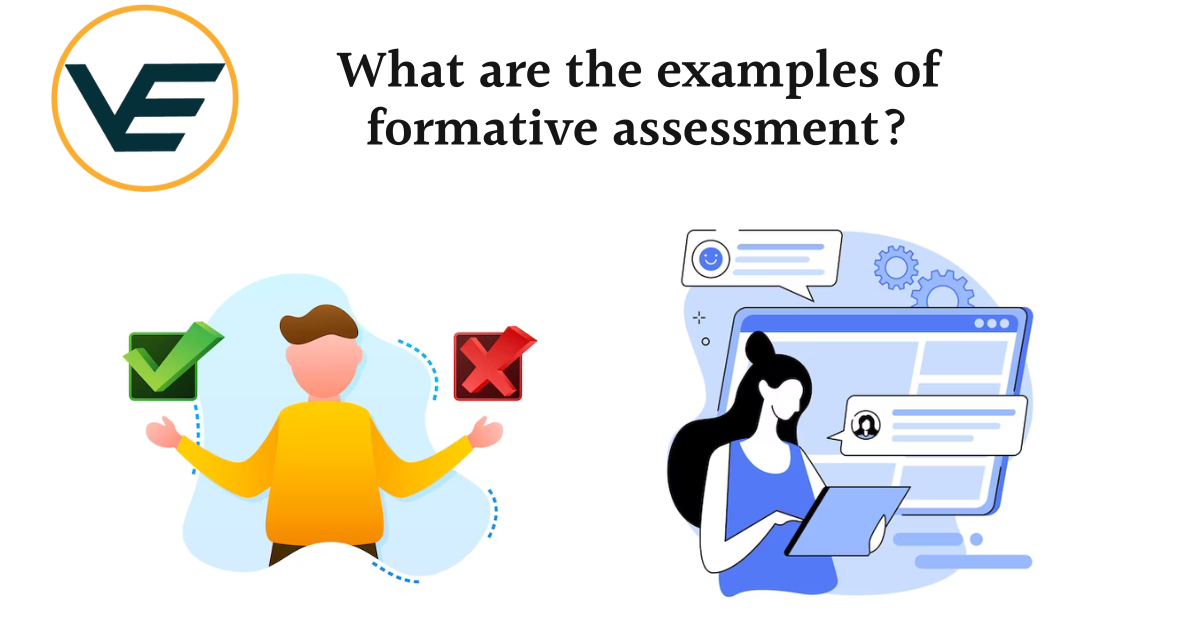Formative assessment is a crucial component of the learning process. Educators utilize a variety of tools and techniques to consistently gather feedback on the understanding and progress of their students. Unlike summative assessments at the end of a unit or course, formative assessments occur during instruction and provide real-time insights into students’ strengths and areas for improvement. These assessments enable teachers to tailor their teaching methods, offer timely interventions, and foster a supportive learning environment. By using formative assessment, educators can help students reach their full potential and better comprehend the subject matter.

20 Examples of formative assessment
Here are some examples of formative assessment:
1. Quizzes and Tests: Short quizzes or tests are conducted during the learning process to gauge students’ understanding and identify areas of improvement.
2. Classroom Discussions: Engaging students in discussions about the topic to assess their comprehension and encourage critical thinking.
3. Exit Tickets: Quick questions or prompts are given at the end of a lesson to assess what students have learned.
4. Think-Pair-Share: Students think about a question individually, then discuss their answers with a partner before sharing with the class.
5. Peer Feedback: Students provide feedback to their peers on their work or presentations.
Examples of formative assessment in the classroom
6. Self-Assessment: Encouraging students to reflect on their learning progress and identify areas where they need to improve.
7. One-Minute Paper: Students write a brief response to a question or prompt in one minute, providing valuable feedback to the instructor.
8. Concept Maps: Students create visual representations of their understanding of a topic, helping to identify connections and misconceptions.
9. Observations: Teachers observe students’ behaviors, interactions, and engagement during class activities.
10. Learning Logs or Journals: Students keep a record of their thoughts, reflections, and progress throughout the learning process.
11. Peer Teaching: Students take turns teaching a concept to their peers, reinforcing their understanding.
12. Group Projects: Assessing students’ collaborative skills and the quality of their contributions to group projects.
13. Mini Whiteboard Responses: Students write their answers on mini whiteboards, allowing the teacher to quickly assess their understanding.
14. Online Polls and Surveys: Using digital tools to gather real-time feedback from students.
Summative assessment examples of elementary
15. Graphic Organizers: Students use graphic organizers to organize their thoughts and demonstrate their understanding of a topic.
16. Role Play or Simulations: Students participate in role plays or simulations to apply their knowledge in real-world scenarios.
17. Exit Interviews: Teachers have one-on-one discussions with students to get feedback on the lesson or the teaching approach.
18. Conceptual Questions: Ask open-ended questions that require higher-order thinking and critical analysis.
19. Minute Papers: Students take a minute to summarize the main points of the lesson or answer a specific question.
20. Peer Assessment: Having students assess the work of their peers based on specific criteria.
Formative assessments are valuable tools for educators to gather ongoing feedback, identify learning gaps, and make instructional adjustments to enhance student learning. They provide valuable insights into students’ progress and understanding throughout the learning process.

